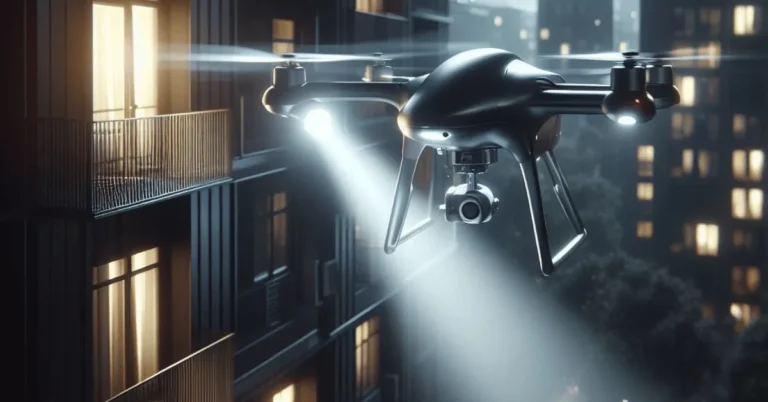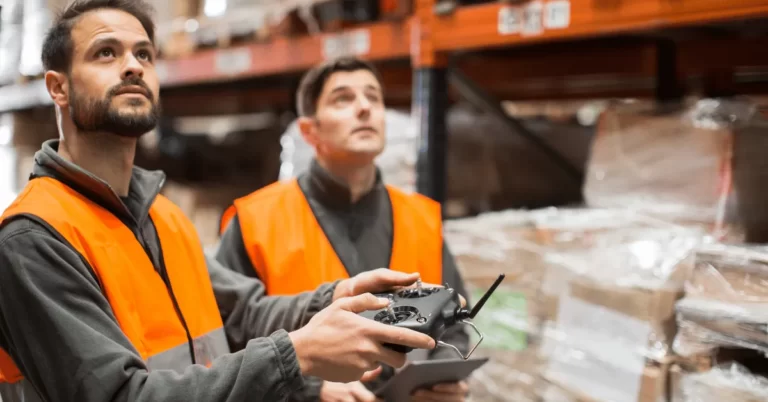What is The Process For Controlling a Drone Using Bluetooth?

Bluetooth-controlled drones represent an innovative intersection of technology and accessibility, enabling users to manage aerial devices through their smartphones or tablets.
Unlike traditional drones that require specialized remote controllers, Bluetooth-controlled drones leverage the ubiquitous Bluetooth technology, making them more user-friendly and cost-effective.
This simplicity in design and operation has contributed to their growing popularity among hobbyists and professionals alike.
Advantages of Bluetooth Technology in Drone Control
The primary advantage of using Bluetooth technology for drone control lies in its accessibility. Most modern devices come equipped with Bluetooth capabilities, eliminating the need for additional hardware.
This not only reduces the overall cost but also simplifies the user experience, allowing even beginners to pilot their drones with ease.
Furthermore, Bluetooth connections are generally stable over short distances, which is ideal for recreational and light commercial uses.
Unsure if your drone features Remote ID? Check out our guide to see if it qualifies!
Types and Features of Bluetooth-Controlled Drones
Bluetooth-controlled drones come in various types, ranging from mini-drones suitable for indoor use to more robust models designed for outdoor environments.
These drones are often equipped with essential features such as cameras, GPS, and various sensors, making them versatile tools for photography, videography, and even educational purposes.
The ease of integrating mobile applications with these drones further expands their functionality, providing users with real-time data and enhanced control options.
Applications of Bluetooth-Controlled Drones
Educational Use
Common applications of Bluetooth-controlled drones extend beyond casual recreation. They are increasingly used in educational settings to teach principles of aerodynamics, electronics, and coding.
Commercial Use
In the commercial sector, they serve roles in real estate for property photography, agriculture for crop monitoring, and even in public safety for search and rescue operations.
The combination of affordability, ease of use, and versatility positions Bluetooth-controlled drones as a valuable asset across various fields.
Not familiar with headless mode? No worries! Check out our guide on What is Headless Mode on a Drone? to learn how it makes flying easier.
Setting Up Your Drone and Bluetooth Device
To begin controlling your drone using Bluetooth, it is essential to prepare both the drone and the Bluetooth device, such as a smartphone or tablet, for connectivity.
Charging the Drone
The initial step involves charging the drone. Most drones come with a rechargeable battery that can be charged using a micro-USB or proprietary charger.
Ensure that the battery is fully charged before proceeding, as a low battery can impede the setup process and flight duration.
Compatibility Check
Next, confirm that your Bluetooth device is compatible with the drone. Review the drone’s manual or manufacturer’s website to verify that your smartphone or tablet meets the necessary specifications.
Typically, the Bluetooth device should support at least Bluetooth 4.0 for optimal performance and connectivity.
Installing Required Apps
Once compatibility is established, the next step is to install any required apps or software. Most drones have a dedicated app available on the App Store or Google Play Store.
Download and install the application recommended by the drone manufacturer. This app will serve as the primary interface for controlling the drone and accessing various features.
Pairing Process
After installing the necessary software, initiate the pairing process between the drone and the Bluetooth device.
Start by turning on the drone and enabling Bluetooth on your smartphone or tablet. Open the drone’s app and follow the on-screen instructions to connect the drone.
Typically, this involves selecting the drone from a list of available Bluetooth devices and entering a pairing code if prompted.
Troubleshooting Connectivity Issues
In the event of connectivity issues, there are several troubleshooting steps you can take. Ensure that the drone and Bluetooth device are within a reasonable range of each other, ideally within 30 feet. Check for any firmware updates for both the drone and the app, as updates can resolve compatibility issues. Additionally, try restarting both the drone and the Bluetooth device to reset the connection.
Curious about a military drone’s endurance? Check out our info on how long they can fly!
Understanding the Control Interface
The control interface of Bluetooth drone control apps is designed to provide an intuitive and user-friendly experience for pilots of all skill levels.
Typically, these interfaces consist of virtual joysticks and buttons that replicate the controls of a traditional physical drone remote. The primary functions of these controls include takeoff, landing, and directional movements.
Joystick Functions
- Left Joystick: Manages altitude and rotation. Pushing it forward or backward will make the drone ascend or descend, respectively. Moving it left or right rotates the drone around its vertical axis, allowing for precise orientation adjustments.
- Right Joystick: Controls the drone’s horizontal movements. Tilting it forward propels the drone forward, while moving it backward reverses its direction. Lateral movements to the left or right will make the drone strafe in the corresponding direction.
Additional Controls
In addition to these fundamental controls, most Bluetooth drone apps include dedicated buttons for taking off and landing, ensuring that these crucial actions can be executed swiftly and safely.
Some interfaces might also feature emergency stop buttons to immediately cut power in case of unforeseen issues.
Customization Options
Customization options are a significant advantage of these apps. Users can often adjust the sensitivity of the joysticks to suit their comfort level, making the drone’s response more or less aggressive based on personal preference or skill level.
Pre-set flight modes, such as beginner, intermediate, and expert, can also be selected to automatically adjust the drone’s behavior and responsiveness.
These modes are particularly beneficial for newcomers, allowing them to gradually increase the complexity of their flying experience as they gain confidence and proficiency.
Practice for Beginners
For beginners, it is crucial to spend time familiarizing themselves with the control interface in a safe, open area.
Practice basic maneuvers like takeoff, landing, and simple directional changes to build muscle memory.
Utilizing the customizable settings can help tailor the experience to individual needs, making the learning process smoother and more enjoyable.
Wondering about the downsides of drone warfare? Explore why drones might not be the best fit for every situation in our article, “Why Drones Should NOT be Used in War?“
Safety Tips and Best Practices
Ensuring safety is paramount when operating a Bluetooth-controlled drone.
Pre-Flight Checks
Before each flight, a series of pre-flight checks should be conducted to guarantee a secure and seamless flying experience.
Begin by ensuring that the battery is fully charged and in good condition, as a depleted battery can lead to abrupt power loss and potential crashes.
Additionally, inspect the drone for any physical damages or loose components that might affect its performance.
Choosing a Clear Flight Path
It is crucial to choose a clear flight path free from obstacles such as trees, power lines, and buildings, which can interfere with the drone’s trajectory.
Always maintain a direct line-of-sight with the drone to easily monitor its movements and respond promptly to any unexpected issues. This practice not only enhances control but also helps prevent collisions.
Adhering to Regulations
Adhering to local regulations and no-fly zones is essential for responsible drone usage. Different areas may have specific rules regarding where drones can be flown, often to protect sensitive locations or minimize risks to people and property.
Familiarize yourself with these regulations to avoid legal repercussions and ensure safe operations.
Emergency Preparedness
Emergency preparedness is another critical aspect of safe drone flying. In the event of a lost connection, it is beneficial to have pre-set return-to-home (RTH) features activated, allowing the drone to automatically return to its starting point.
Similarly, if the battery level becomes critically low, promptly bring the drone back to avoid an uncontrolled landing. Understanding and practicing these emergency protocols can mitigate potential accidents.
Overall, practicing responsible drone usage entails being vigilant, informed, and prepared. By following these safety tips and best practices, pilots can prevent accidents, respect regulations, and enjoy a positive and secure flying experience with their Bluetooth-controlled drones.







